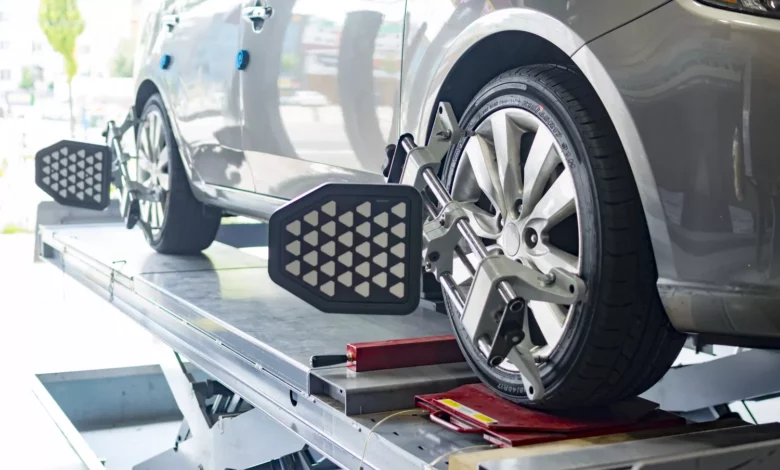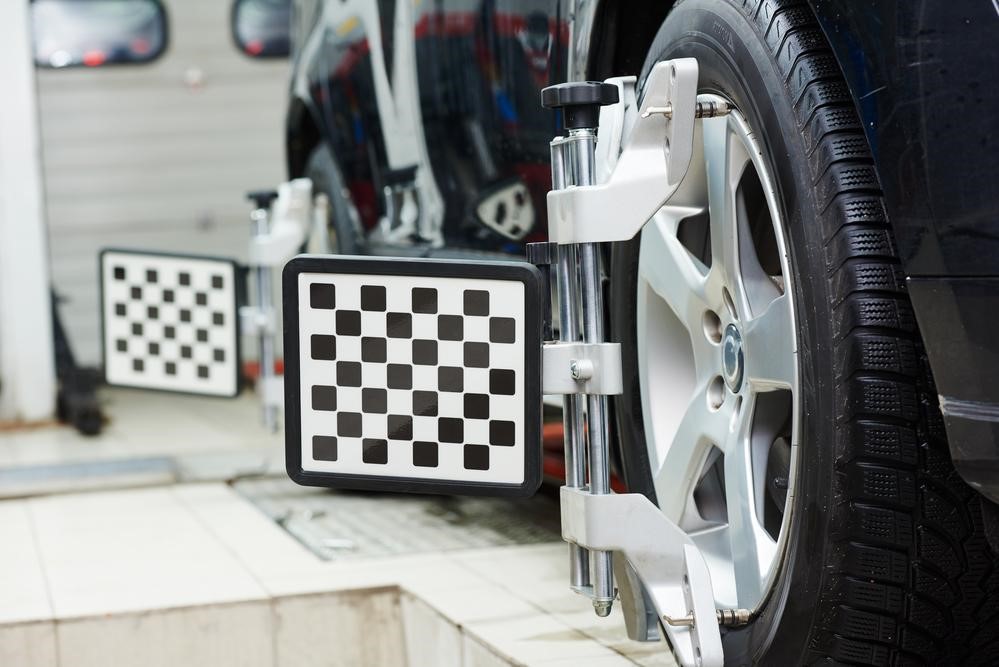The Importance of Regular Wheel Alignment

You know how awful to use shopping carts are when they have wonky wheels? That is similar to how much harder your engine has to compensate for misaligned wheels. In fact, studies have shown that misaligned wheels result in poorer fuel economy, shorter tire life span, and an overall hazardous driving experience.
But what causes your wheels to misalign? It happens when your vehicle is suddenly shaken, such as when driving through a pothole, a speed bump, or any obstacle in the road. Since there are many unexpected surprises when driving, it can be said that it is inevitable that your wheels will get out of alignment upon use.
This is where regular wheel alignment comes in. How exactly would you benefit from regular wheel alignment? Here are just some of its many advantages.
Your navigation stays accurate
Probably one of the most hazardous downsides of having misaligned wheels is difficulties in maneuvering your vehicle. Similar to having dysfunctional wheels on a shopping cart, misaligned wheels will also swerve your vehicle to one side, even when you are supposedly treading a straight path. This unpredictable driving is dangerous not only for the driver and their passengers, but also for those sharing the road with them.
This is why performing regular wheel alignment conserves your vehicle’s shelf life and preserves your safety at the same time. But having it done at any downtown mechanic won’t do. Make sure to avail of this essential service from a trustworthy provider.

For instance, specialty European cars will do best to have their regular wheel alignment services done at Europe Services. While amateur mechanics might sound like a cost-saving decision upfront, you can benefit in the long run when you invest in services from a qualified and well-equipped service center.
Safely halt even on wet roads
Since wheel misalignment causes unnecessary wear on your tire’s treads, this damage makes your tires ineffective against slippery, wet roads. Remember, tire treads are responsible for providing much-needed friction when braking, so wearing out these treads, also called “feathering,” will make it difficult for you to halt, especially when it is raining.
To avoid overshooting or, worse, accidentally bumping into another car when the road is slippery, make sure to administer regular wheel alignment. Since accurately-balanced wheels also disperse the stress and wear evenly on all your tires, you will also find that your wheels will last longer and their treads remain intact for an extended period.
Enjoy optimal fuel efficiency
Even though wheel alignment and fuel consumption might sound unrelated, a study by the U.S. Environmental Protection Agency concluded that you consume 7% more fuel when your tires are off-balance. This means that you could be spending upwards of $100 more annually when your tires are misaligned, caused by the introduction of an angle of slip when you are braking, accelerating, or cruising.
This drifting or swerving would require your vehicle to compensate to correct this, making the engine work harder, especially when you are steering. With misaligned wheels, a tire is continuously skidding throughout your ride, which means it takes more effort for your car to be in motion. This extra work means more energy is consumed, resulting in inefficient fuel efficiency in your car.

Conserve your vehicle’s components
When your wheels are aligned, it causes a positive domino effect on the rest of your car’s components, especially on the axle and shock absorbers. This means you need fewer visits to the mechanic, saving you from stress, headaches, and costly repair fees in maintaining your vehicle.
Preserving the shelf life of these tiny but crucial car components will result in smoother, hassle-free rides. For instance, aligned wheels will help your suspension system function correctly and keep your tires where they should be.
Wrapping things up
Given how common it is now to have in-built driver assist systems in your vehicle, such as parking assist, traction control, and electronic stability control, regular wheel alignment has become a staple of your vehicle’s maintenance checkup. Ideally, it should be done every other oil change or every 10,000 miles.
However, there are also some telltale signs of when your wheels might need realigning already. Aside from the issues mentioned above, if you find your steering wheel off-center when driving or if it is excessively vibrating when the vehicle is in motion, then it might be due to your wheels being unbalanced. An uneven tire wear, as well as excessive tire squealing whenever you turn or accelerate, are some of the biggest signs.
Remember, your tires are one of the major components of your vehicle. As much as flat or worn-out tires are causes for concern, so is wheel misalignment. Make sure to keep yourself safe and those sharing the road with you by keeping your tires balanced and accurate.



